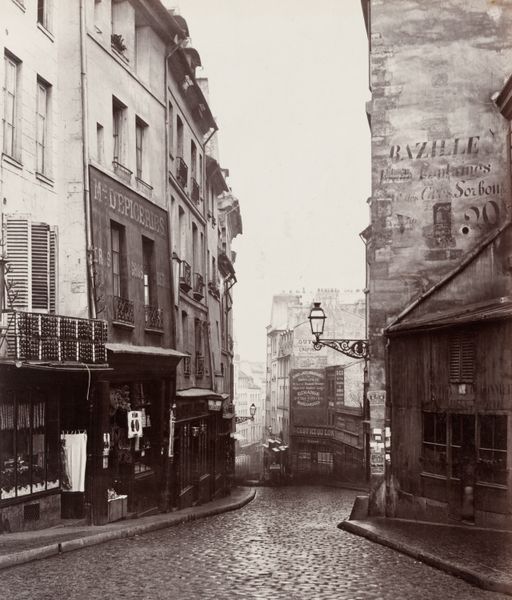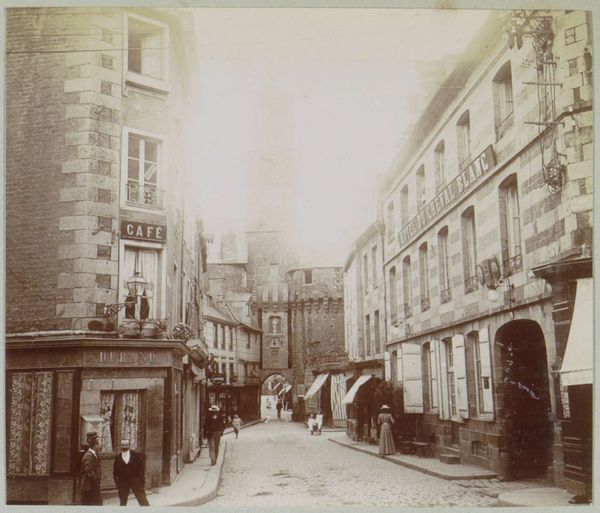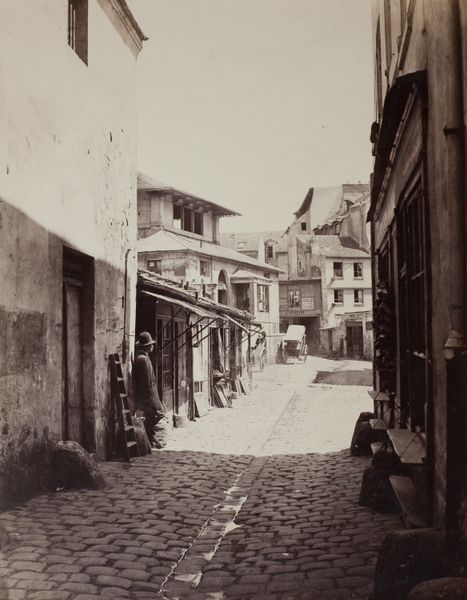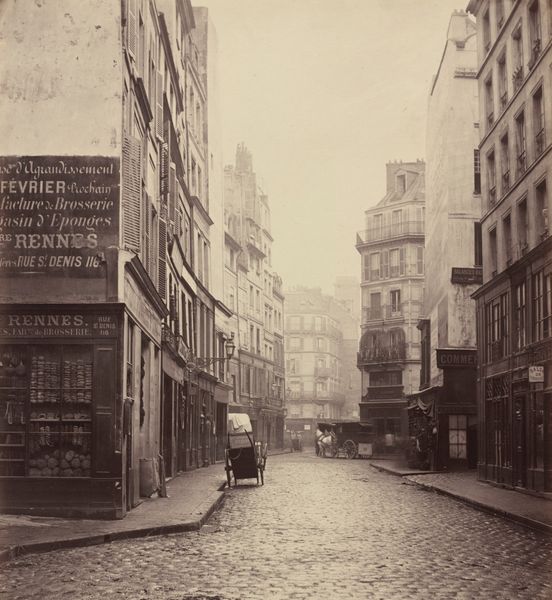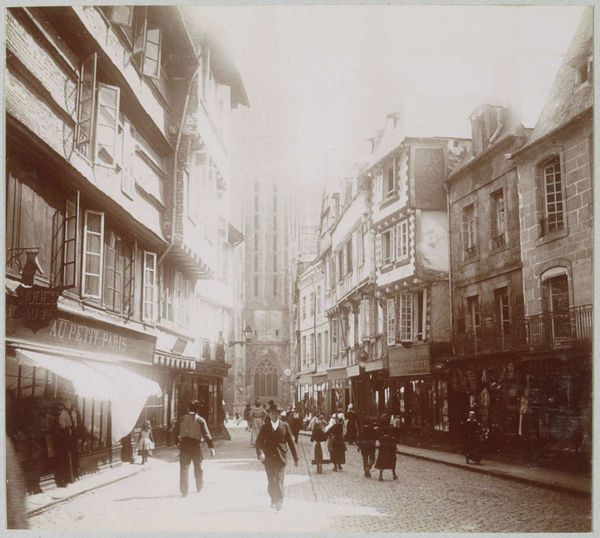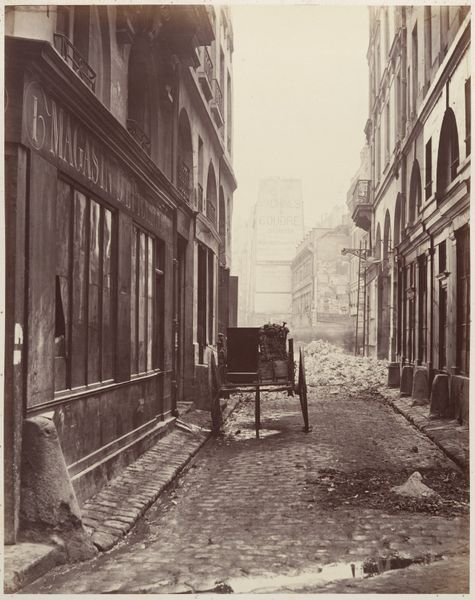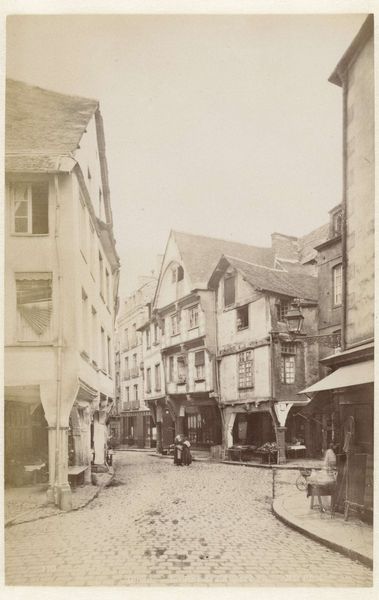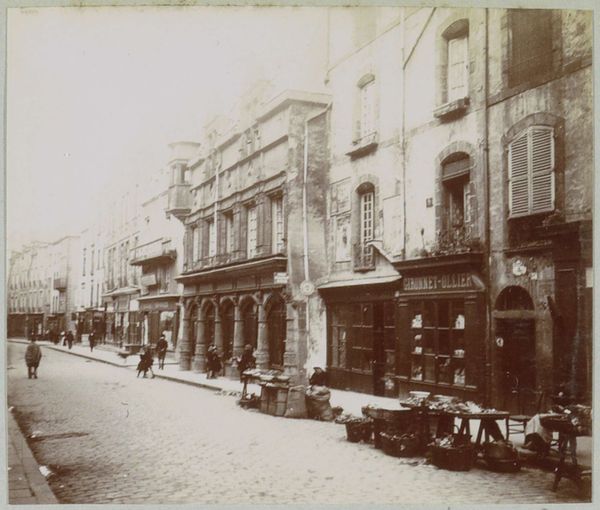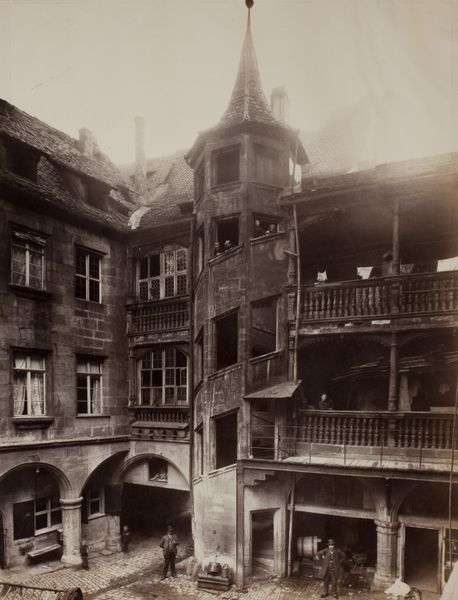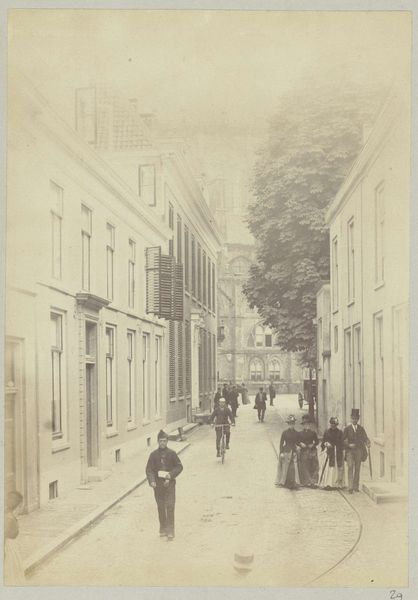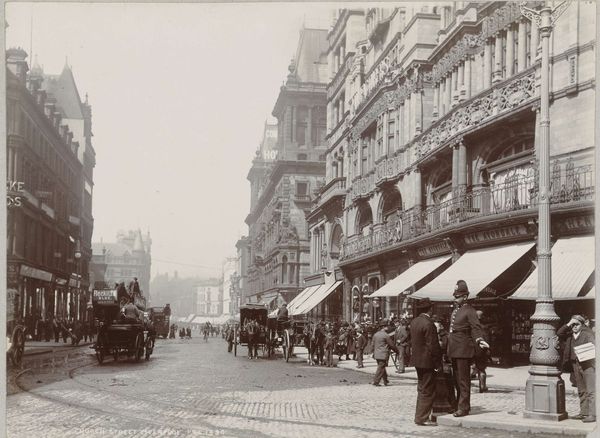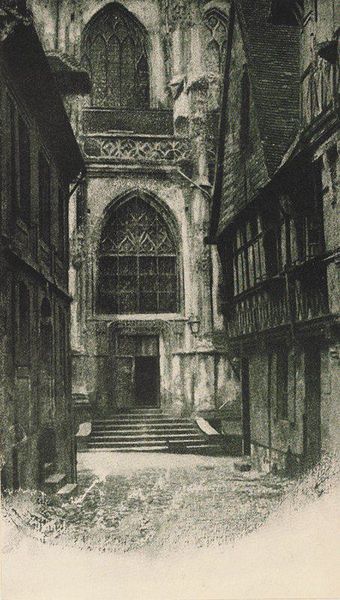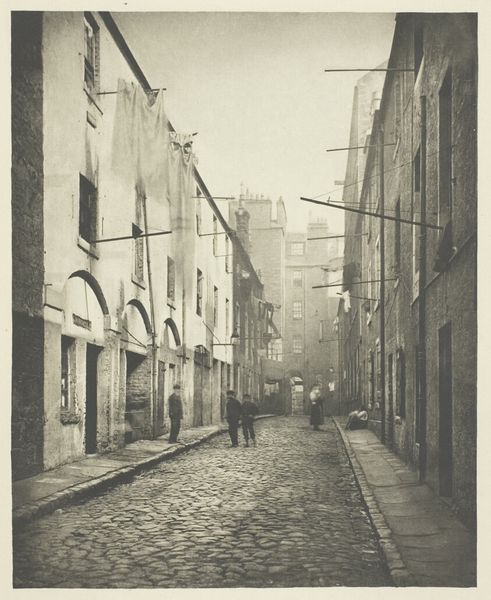
Dimensions: image/sheet: 22 × 18 cm (8 11/16 × 7 1/16 in.)
Copyright: National Gallery of Art: CC0 1.0
Editor: This is Eugène Atget’s "Cour du Dragon", taken in 1905. It’s a gelatin silver print, and the sepia tones give the whole scene a dreamy, almost unreal quality. I’m immediately drawn to the sense of depth, pulling me into the street. What strikes you most about it? Curator: The cobblestone street is the great leveler. We look at these romantic notions of old-world Paris, but Atget reminds us of the unseen labor, the social structures embedded within the city's very foundation. Consider the working-class neighborhoods and how they’re rendered visible, how they serve and provide for the privileged, the economic underpinnings inherent within seemingly romantic and innocuous depictions of urban life. How do the presence of work carts impact the sense of depth that you mentioned? Editor: I see what you mean! They are visually interesting, almost sculptural, but they are also there for a reason, tools used for work and possibly highlighting socioeconomic disparity. And the location itself, "Dragon Court," implies something more sinister. How does Atget’s choice to photograph this alley connect with the burgeoning urban centers, the grand boulevards also rising at the time? Curator: Exactly! Atget’s work can be interpreted as a subtle act of resistance. While Haussmann’s grand boulevards were transforming Paris into a modern city, Atget focused on these older, more vulnerable spaces. These areas are vulnerable to demolition, erasure, and being forgotten. We can view Atget as reclaiming visual territory in response to dominant narratives surrounding "progress" and modernity, documenting ways of life that risked disappearing entirely. This becomes an assertion of identity for those displaced. Editor: That adds such a critical layer! I was only thinking about it visually. Curator: Photography provides avenues for interrogating, critiquing, and even subverting existing social and political structures. Understanding the history surrounding photography reveals an ethical dimension. Editor: I now feel more aware of the silent narratives within seemingly straightforward urban landscapes!
Comments
No comments
Be the first to comment and join the conversation on the ultimate creative platform.
